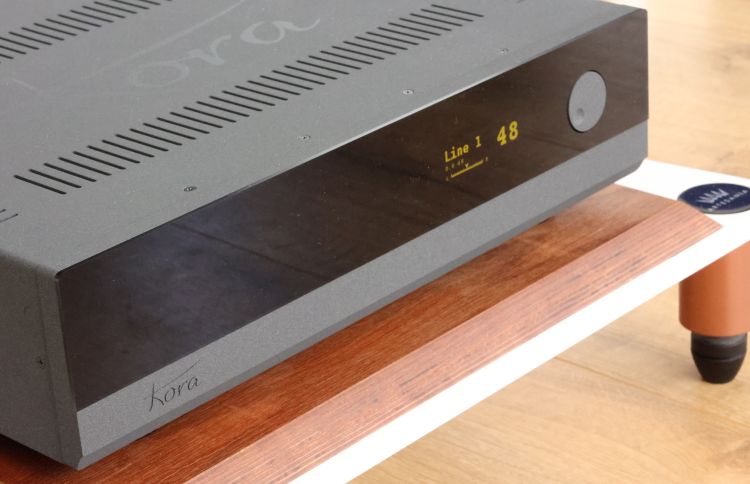
Review samples supplied by Dimex
Benelux retail price including VAT: 4.999 euro
When reading that the Kora TB140 is a hybrid tube/transistor amplifier, no doubt, the idea forms in our collective heads that it must be a combination of a tube preamplifier and a transistor power amplifier but this is not the case. In this case, it concerns a tube power amplifier with a very special twist.
Like the entire range of Kora amplifiers that are all designed and built in Toulouse, France, the TB140 is centered around a proprietary technique that the company calls SquareTube. This is an operational amplifier section, equipped with 4 triode tubes that are connected directly to the speaker terminals, without transformers. But how can 4 tubes supply enough current to drive loudspeakers properly, let alone be stable into any load, as the maker claims?
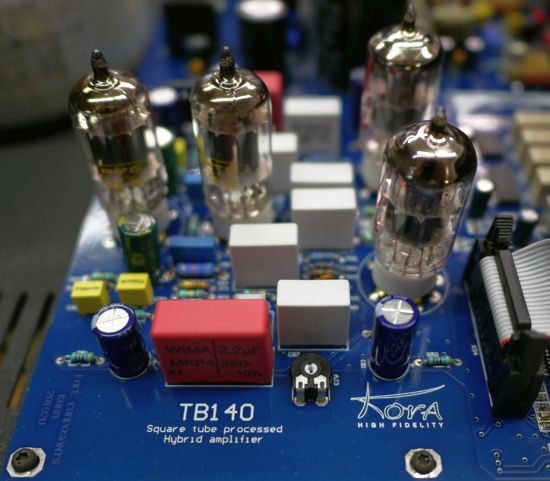
SquareTube
The SquareTube arrangement is a result of a long process in R&D led by Bruno Vander Elst, designer for and director of Kora. The arrangement can be seen as an operational amplifier in which two ECC82 tubes and two ECC83 tubes are used in Class-A to make a single amplification stage that outputs a symmetrical voltage signal with respect to the earth reference, while exceptionally linear Motorola power transistors provide an impedance matching function. The symmetrical schematic naturally reduces distortion while the transistor output stage works as a follower, without gain and at very low impedance, which guarantees high operating stability, even in demanding and complex loads. The role of this transistor output stage is somewhat similar to the one generally assigned to the traditional output transformer but with no phase shifts, no bad power coupling in the low-frequency range, and no current limitation. Importantly, in this arrangement, the transistors provide only the required current, without amplifying the signal and as such, this has no influence on the sound of the amplifier.
The SquareTube circuit is powered by highly-regulated 460 Volts, a supply that normally corresponds to an amplifier of 2500 Watts or more, under 8 Ohms. Of this supply, only 20% is used when the
amplifier is at its maximum. In other words: the amplifier is always in its comfort zone and never
operates near its limits.
The operating point of the tubes is imposed by a current source on the two ECC83 input triodes into the differential stage and by a reference voltage for the two ECC82 output triodes while the tubes never supply more than 2mA which guarantees a service life of approximately 10.000 hours. The voltage amplification stage provides extremely high gain and drives the transistor Push-Pull transistor stage. Together, Voltage times Power creates the required Watts. This makes it clear that the SquareTube circuit is not a transistor amplifier preceded by tubes, it is a tube amplifier assisted by transistors.
In this way, Kora achieves the behavior of an OTL (output transformer-less) tube amplifier yet one that remains entirely unfazed by the load, either capacitively or inductively.
To preserve the capacitors, Kora power supplies are equipped with a circuit that will instill very gently, and for 2 minutes, a slight current in order to permanently maintain a residual voltage at the capacitor’s terminals. Once they are pre-loaded, this current is canceled. The first advantage is that maintained in this way, the lifetime of the components can be counted in decades while maintaining their characteristics. The second advantage is that in the starter mode, the capacitors are close to their operating voltage so that the inrush current will be indeed reduced. A relay only couples the voltage from the tubes to the transistors when all four tubes are temperature-stabilized, a process that is neatly illustrated by a progress bar on the front panel display.
Tube products are normally sensitive to being switched on/off/on in succession. I asked Bruno if this is also the case for the Kora products and if they require a defined off time before being switched on again. Bruno responds:
There are no particular problems with the number of switch-offs and switch-on. Everything is managed by the microcontroller. Our product is not an enlightened amateur product, but a professional product calculated for a nominal life of 30 years.
To avoid sending the speakers a completely useless, even harmful DC current, the output voltage is constantly monitored and held close to zero by a dedicated circuit. This circuit is not involved in the amplification chain and has no effect on the audio signal. In idle, the current consumption of the Kora is very low and the transistors work in Class-A/B with a quiescent current of approximately 30mA.
During use, the amplifier never got more than lukewarm, even when I used it with Magico Q5’s to fully test its abilities. In standby mode (with the rear power switch on but the front panel display off except for a red LED), only the microcontroller board is powered which monitors the remote control receiver and any actions on the front panel.
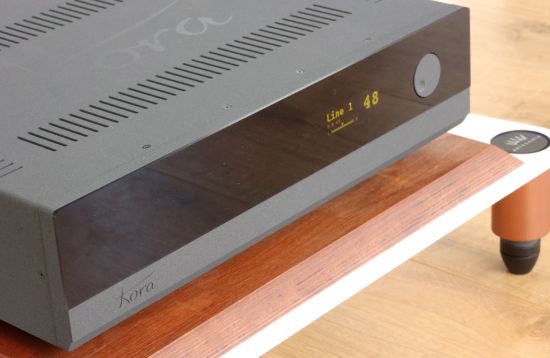
TB140
The TB140 is Kora’s most cost-effective integrated amplifier. It contains the SquareTube operational amplifier as well as an IC-controlled analog preamplifier section. All the line inputs are high-level inputs of the same sensitivity, with an input impedance in excess of 10 kOhms. An MM Phono stage is included which is selected via input 5. As I use MC cartridges exclusively, I did not test this section. Input 4 can be assigned as a Bypass input. I asked Bruno if this bypass mode still passes the input signal through the preamp section (set at unity) or if it bypasses it entirely. Bruno responds:
In bypass, indeed the gain setting is 1. The SquareTube is complex to set up. There are 13 separate power supplies in the amp. The power on/off procedure is managed by a microcontroller. This gain part is used in these procedures.
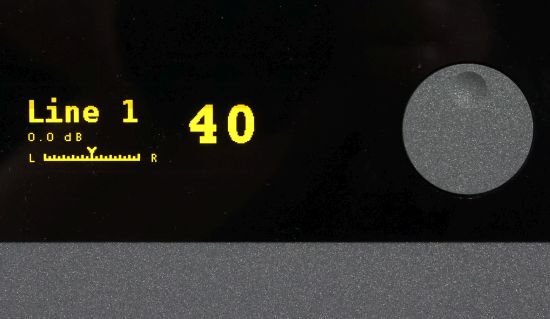
The amplifier contains a single multi-function rotary/push dial that can be used to power on and off, set the volume, select inputs, and access the menu. I’m delighted to report that the operation of this single dial is entirely straightforward. Such is certainly not always the case. In the setup menu, one can adjust the gain offset per input, set the level of the click volume as the rotary dial is used to adjust the volume (very classy!) adjust the display brightness, set the channel balance, and define the amount of information to be shown on the display. Very, very thorough, and very well-executed!
As a reviewer, I often need to swap cables, and speaker cables, too. As I am well aware of the dangers of using a traditional tube amplifier without a load, I asked designer Bruno Vander Elst if it is safe to leave the TB140 powered on without connected speakers. Bruno responds:
The SquareTube output stage is extremely stable and it can remain unloaded for life! Tube amplifiers can’t stand being unloaded simply because, without a loudspeaker, the load impedance of the output tube(s) goes up to infinity. And it’s even more dramatic for tetrodes and other pentodes because in this case, a lot of current can flow through the so-called “screen” grids or beam steering barriers.
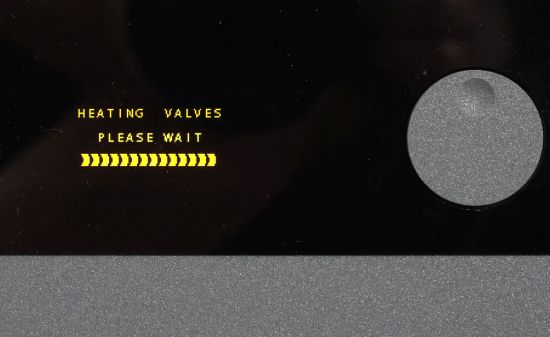
Break-in and Warm-up
The unit was delivered to me with approx 100 hours of use and assumed run-in. The amplifier sounds hugely impressive even right from the first second it is switched on but the sound gains noticeably more fluidity, bloom, and tonal saturation after having played for 30-60 minutes. I found that it reached its ideal presentation after about two hours of playing, at which point its harmonic richness and warmth, soundstage depth, and organic flow are fully developed and remain stable.
I asked designer Bruno if this conforms with his experience. Bruno replies:
Indeed, the amplifier needs to rise slightly in temperature to find its equilibrium point. The quiescent current of the power transistors is established after 30 to 60 minutes. But you can also run it at a high level for a few minutes to get it to warm up a little faster! Apart from that, the amps don’t need a break-in. They have already worked here before shipping.
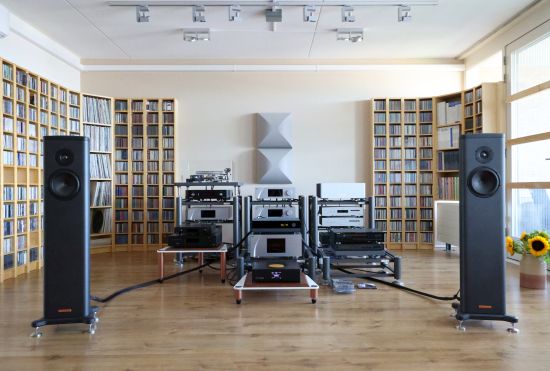
Review Context
The main system used for this review consists of the CH Precision C1 DAC and normally the CH Precision A1.5 power amp with Grimm MU1, Antipodes K50, and Taiko Audio Extreme Music Servers and Magico S1 MkII speakers. More details can be found on the Main System page. For speaker cables, I used the Mad Scientist Black Magic, the Jorma Trinity, and the Driade Flow 405. Additionally, I used the Kora amp with Driade Premium Model 2S speakers.
The secondary system consists primarily of the Ayon CD-10 II CD player and normally the Ayon Spirit III integrated amplifier (5.890 euro) and Xavian Perla Esclusiva speakers. Here, I used the same Driade Flow 405 as well as the FoilFlex speaker cables, and Driade Flow Link Reference 808 interlinks.
Additional listening was done in two friends’ systems. In the first system, I used the Kora TB140 with Magico Q5 and Master CC loudspeakers, and in the second system, it was used with Master CC’s exclusively.
Next: Listening
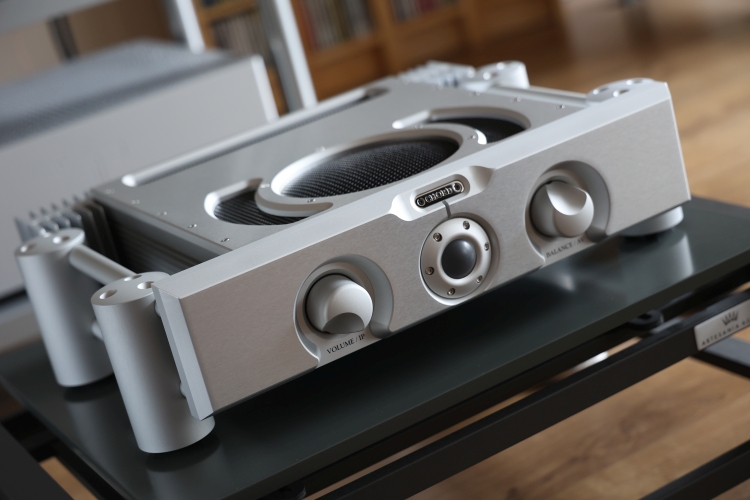
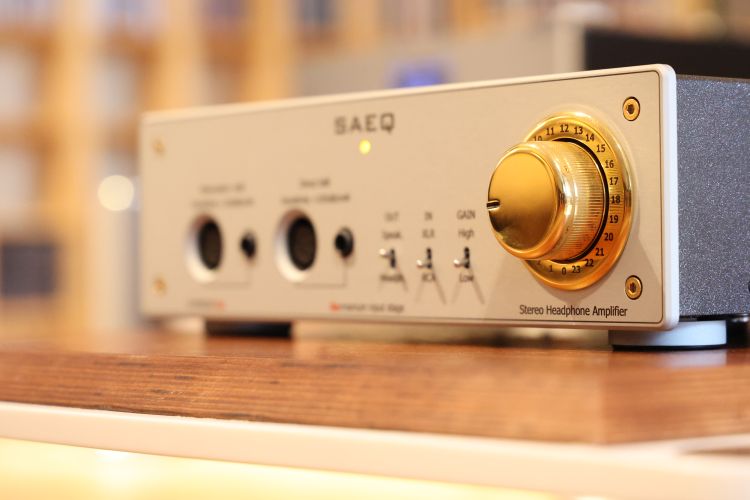
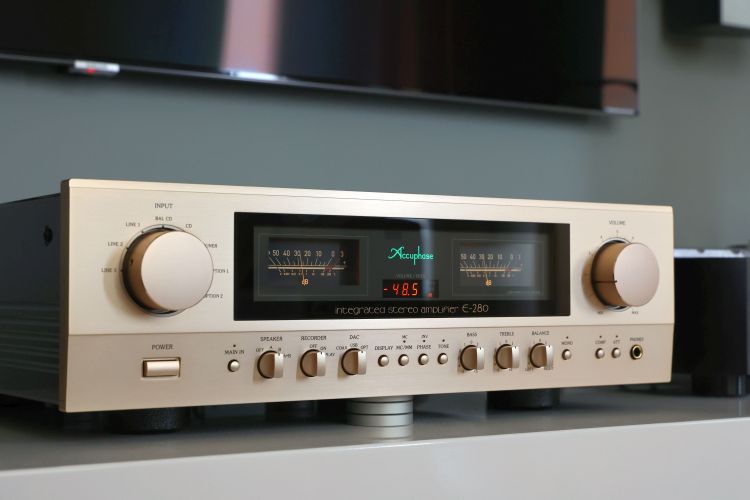
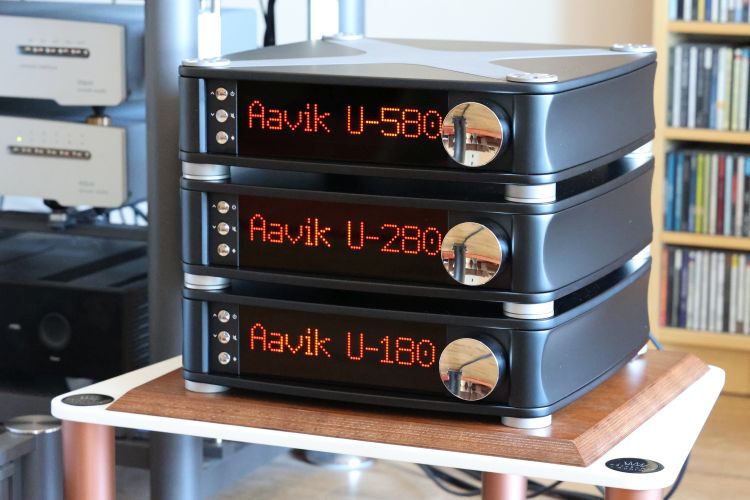
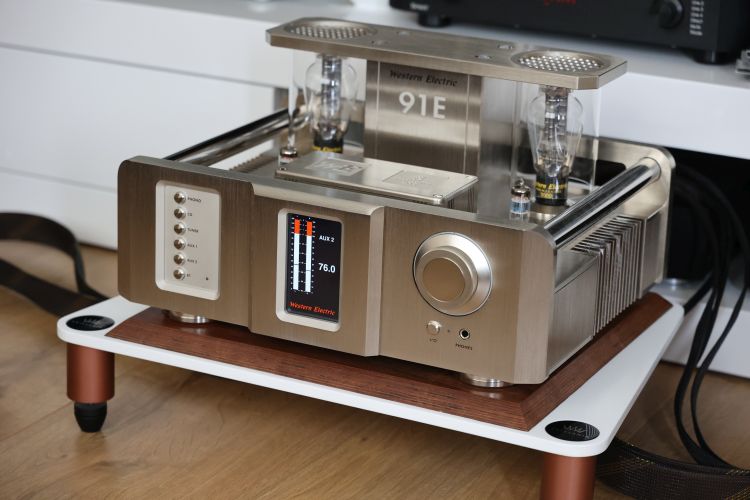
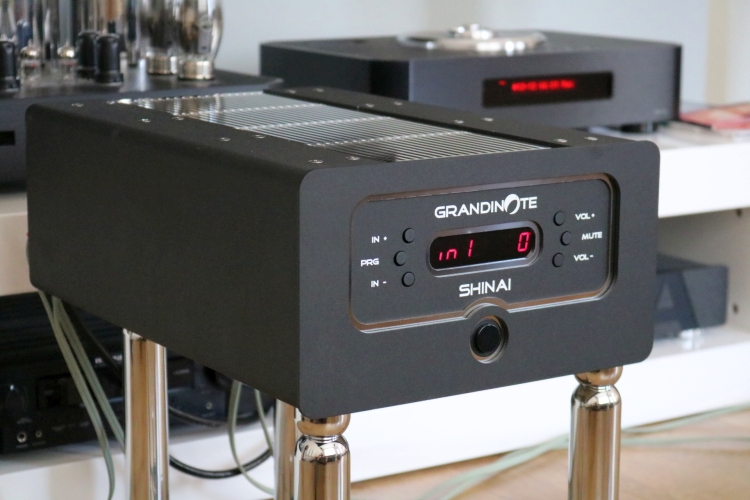
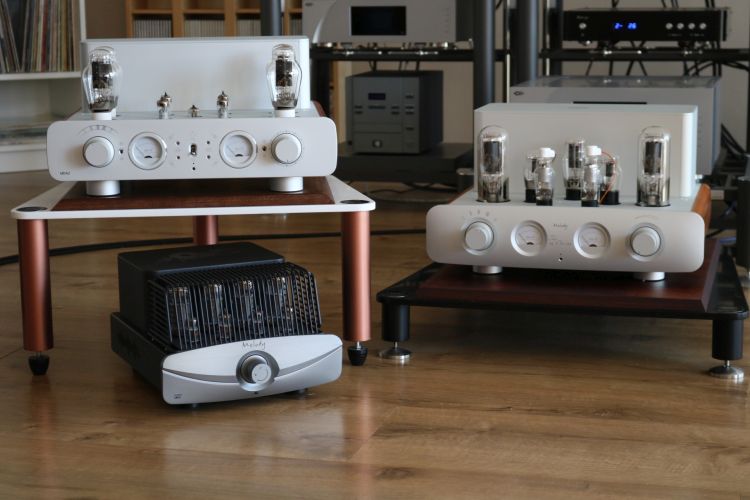
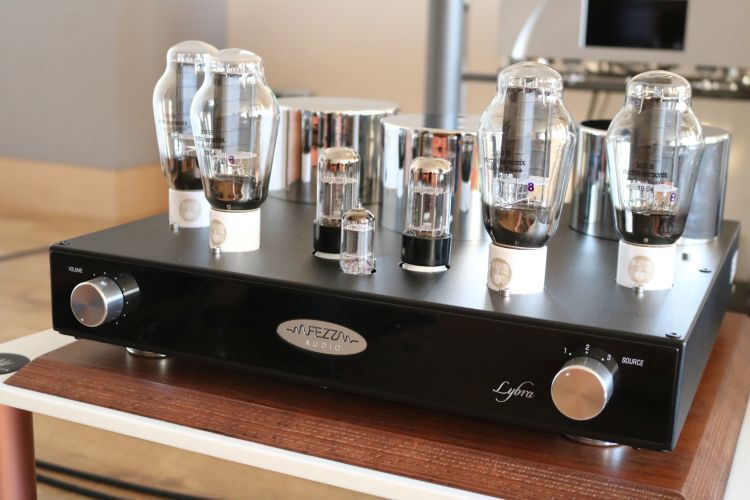
Christian great review you tested that amp in 4 different systems that must be a record for audio reviews! And very interesting design, that topology is vaguely ringing a bell. The brand Thoress makes a hybrid design that I believe is somewhat similar to this, no IC involved but it describes the output stage as “a single-ended, unity gain MOSFET buffer operated at high idle current.”
I’m not tech savvy enough to say if that’s similar or not but it rang a bell with me and that amp is 2.5x times the price of the Kora. I hope the Kora reaches the US at some point it sounds like a very interesting listen.
Cheers,
Jon
Hi Jon, Haha yes, it might well be a record indeed!
I’ve taken a look at the Thoress EHT and I agree that the principle appears similar in that tubes are used for voltage and transistors for current. However, note that the EHT provides 18-25 Watts, depending on the speaker impedance while the TB140 provides at least 70 Watts even into the most punishing loads. Another difference is that the EHT is single-ended while the TB140 is symmetrical (balanced). Not having heard the Thoress I can’t make any claims as to how it would compare sonically but I did review the Western Electric 91E which also employs a similar topology. But interestingly, these two amplifiers couldn’t be more apart sonically. Of course the pair of 300B’s must have considerable influence, but still, this illustrates that there’s still plenty of room for manufacturers to differentiate themselves, even with seemingly similar topologies. Just as it is the case with “regular” transistor- or tube amplifiers, I guess:-)
So, how does the Kora amplifier sound? In a word: rather fantastic!
That’s two words my friend…LOL, it must have been good. I’m waiting on Kora’s forthcoming CD Player, I expect it to “rather fantastic” too.
Thanks for this review – Kora isn’t well known in N. America so I’m glad to see it.
Nice review! How does the TB140 compare to the NuPrime Evo STA?
The EVO STA sounds more like the ST-10 than the AMG-STA and with that, it is also quite different from the TB140. Actually, all three amps sound quite different. EVO STA = predominantly solid/robust/beefy/dark, TB140 = predominantly crystal-clear/fast-paced/articulate/airy.
I replace a Nagra MPA with at TB200 two years ago. And I replaced the T200 with a TA240 a year ago. Could not be happier.
Hi Jacques, how would you describe the differences between the TB200 and the TA240?
Hello Christiaan, i replaced my Esoteric F-05 amplifier for a Kora TB140 and i am very happy with it.
The Kora indeed sounds amazing in combination with my Vivid Audio kaya’s 45.
Thanks for the very informative review.
regards Albert van Bentem